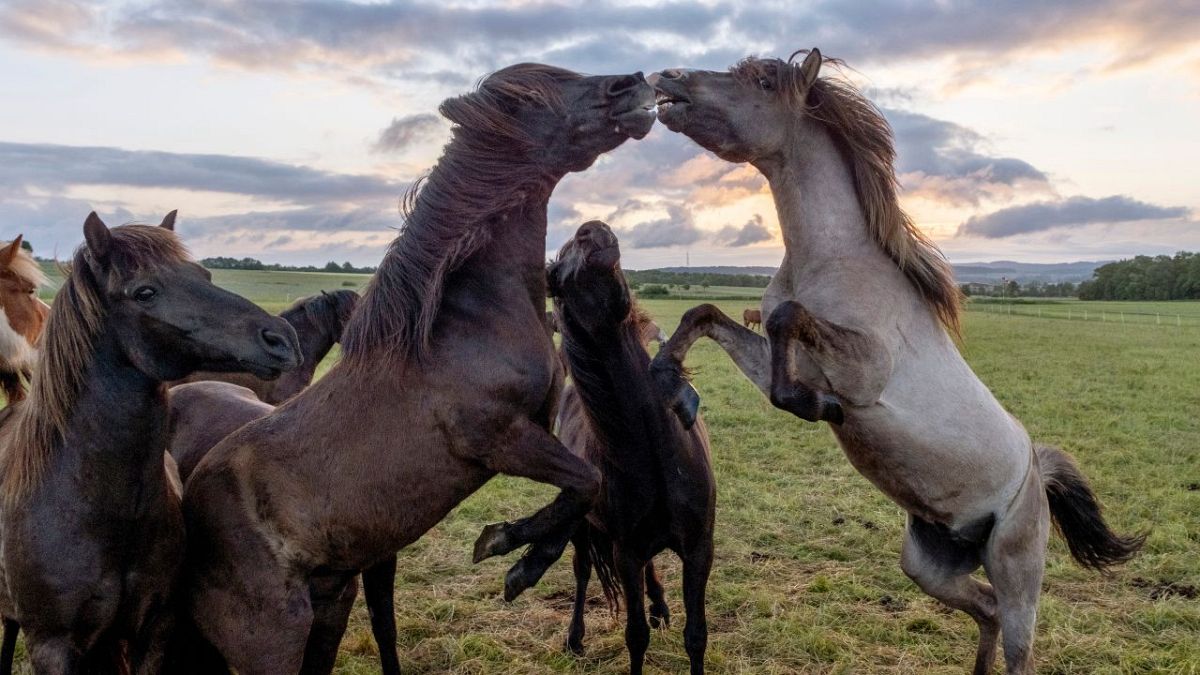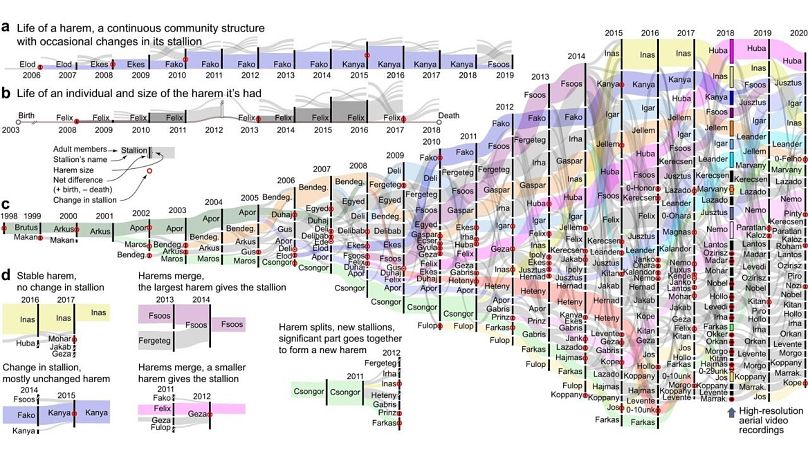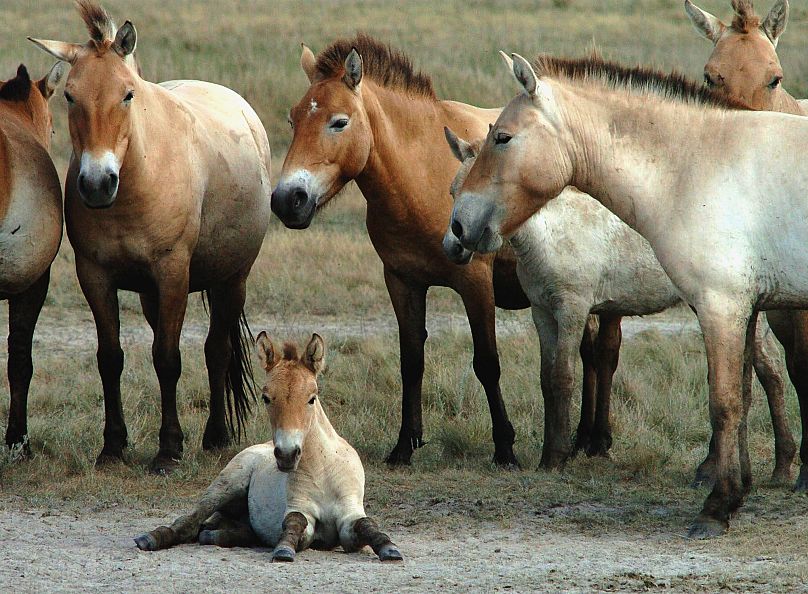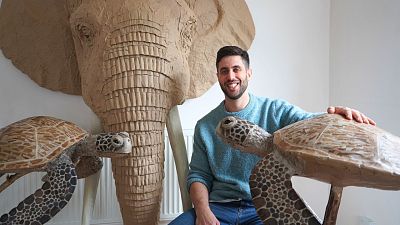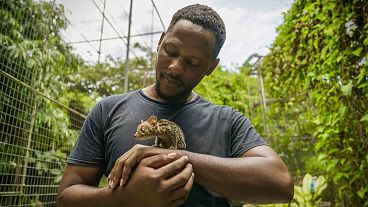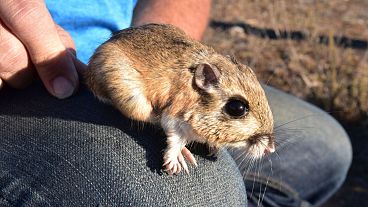Just a few minutes of aerial recording can help to draw conclusions about the past and future of the endangered species.
Researchers in Hungary are using drones to track the movements of an almost 300-member herd of endangered horses.
The Przewalski's horses live on remote plains, far away from human interference.
These wild horses were once extinct in the wild, but thanks to captive breeding programmes there are around 2,000 Przewalski's horses roaming free again.
Przewalski's horses have harems within their herds
A herd numbering 278 horses lives in Hortobágy National Park in Hungary. They may one day be released into the wild.
Researchers from Eötvös Loránd University and the University of Debrecen are taking to the air to better understand the social systems of these beautiful animals.
Scientists use two drones during the observations: one flying high above the herd and another getting close up, so that they can identify individual animals.
"Scientific study of the Przewalski's horses is really interesting," explains Máté Nagy from Eötvös Loránd University.
"They have this hierarchy, or the whole herd moves together and within the herds, there are the harems and within the harems, there are family bonds and then the individuals. And then we wanted to understand this system," he adds.
What are Przewalski's horses?
Przewalski's horses are considered the last truly wild horse left on the planet as other species like the American Mustang are descended from domesticated animals. The species were once common across the vast steppes of Central Asia.
By the time they were discovered by Russian geographer Nikolai Przewalski in 1879, their habitat had been reduced to a small area of western Mongolia. Competition from livestock, human activity and changes to their environment had all but wiped them out.
After the Second World War, their numbers were so low it became clear they could become extinct in the wild.
Why did the researchers use drones?
Using classical observation methods to examine the social behaviour of a large group of animals is "laborious" and "time-consuming".
"Something of the future direction that we are trying to apply, artificial intelligence to actually replace these really labour-intensive work which was done by humans," says Nagy.
Researchers say even a few minutes of aerial recording can provide enough information for specialists to learn about the social structure of the population and even draw conclusions about the past and future of the group's dynamics.
With the help of the aerial footage, they've been able to show that these wild horses live in a complex, multi-segmented society.
In the first years after the herd was introduced, the harems (male-led bands) of wild horses moved far away from each other within their own territory and rarely interacted.
However, in recent years, the harems have gathered together to form a large herd in which individual harems can still be distinguished from each other but move together across the territory of the reserve.
Researchers have discovered that the individuals of the group coordinate their movements and align with each other through subtle interactions.
The multi-level social structure displayed by wild horses is rare in the animal world and is more commonly found in primates.
Their analysis has shown that the social relations of the wild horses are related to kinship and previous acquaintances.
For example, mares are closer in the social network to other mares with which they have spent more time in the same harem.
Kinship can also play a significant role in the organization of harems into herds since harems of brother stallions are closer to each other in the social network than harems of unrelated stallions.
They also found that harems that have existed for a long time and have more members occupy a more central place in the herd's social network.
Through movement analysis, it was also possible to conclude which mares will leave their harem in the next two years and which harem they will transfer to.
Przewalski's horse was downgraded from severely endangered to extinct in the wild in 2008.
Three years later their status was changed to endangered.
The IUCN Red List still categorises the species as "Endangered".
Despite the success of captive breeding programmes, the lack of genetic variety in this tiny, dispersed population means they remain very vulnerable.












